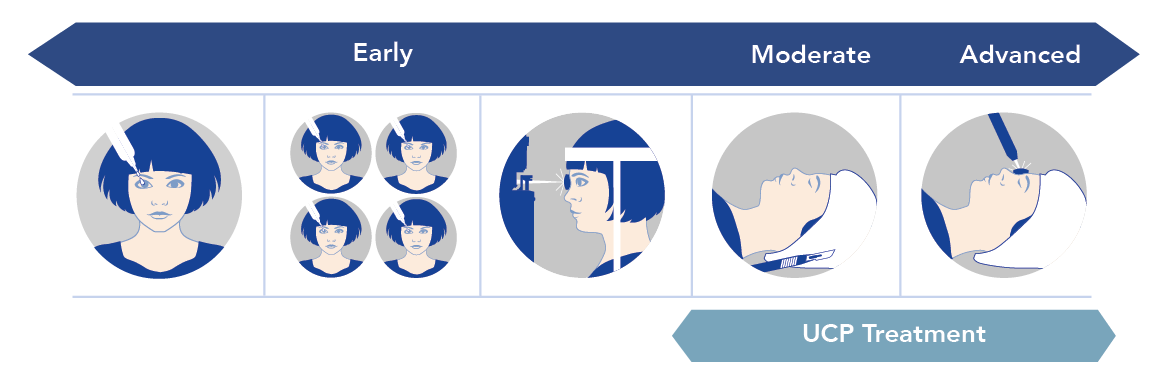Diagnosis and treatment options
Your ophthalmologist will perform a diagnosis and then recommend the appropriate treatment options for you


Your ophthalmologist will conduct a complete assessment if necessary, to evaluate your risk of developing glaucoma and to determine the examinations to be performed as well as their frequency. If they suspect glaucoma, the ophthalmologist will perform a clinical examination and further investigation.
Measurement of intraocular pressure by tonometry;
Observation of the optic nerve head (also called the optic disc) by ophthalmoscopy (fundoscopic exam) or optical coherence tomography (OCT);
Examination of the drainage angle of intraocular fluid (aqueous humor) by gonioscopy;
Visual field test. This test could show the impact of optic nerve damage and its progression. Glaucoma is characterised by a progressive and irreversible damage to the visual field, appearing first in the peripheral sides (on the sides and near the nose) and that can be not perceived for a long time. The loss of visual field can eventually extend to the central part.
Unfortunately, there is currently no available cure for glaucoma. Loss of visual acuity due to glaucoma is irreversible. The good news is that there are treatment option available to prevent or slow down further damage. To achieve this goal, in many cases, the treatment aims to reduce the pressure inside the eyes by improving the flow of the aqueous humour or by reducing its production (mechanism of action used in UCP treatment)
Your ophthalmologist will establish a treatment plan and measure your visual capacity regularly. The possible treatments include eye drops, oral medications, laser or ultrasound therapy, implants and surgeries. In many cases, you will need to take eye drops for life in order to control the IOP ( Intra Ocular Pressure)
Despite the large number of treatments available for glaucoma, it remains a chronic disease that is difficult to deal with. Several types of eye pressure lowering treatments are currently available (eye drops), and are prescribed as first line treatment. They often face constraints such as non-compliance, difficulty in instilling the drops, possible intolerance and undesirable side effects in time.
In order to control the intraocular pressure, it is often necessary to adapt the prescription. When medical treatment is no longer effective, laser treatment (trabeculoplasty) can be applied as a complementary treatment.
When other treatments failed, filtering surgery can be performed (trabeculectomy, sclerectomy) or intraocular implant placement (often associated with cataract surgery) should be considered. The diode laser is the ultimate treatment for refractory glaucoma.
At EYE TECH CARE our aim is to transform glaucoma care in an innovative way with the use of therapeutic ultrasound. Our innovative solution using high intensity focused ultrasound is a new non-invasive treatment option that ophtalmologists can propose to glaucoma patients before or after filtering surgery.
The ultrasound treatment (UCP) is characterized by:
UCP can be used for a broad spectrum of patients, from naïve-of-surgery patients under maximal hypotensive medication (drops) to moderate and advanced glaucoma cases.
UCP can be used for open angle as well as angle closure glaucoma, and for primary and secondary glaucoma.
Multiple UCP treatments are possible, if needed, with no added risk of complications.
A surgery can still be performed if needed after UCP treatment.

*Only your ophthalmologist can decide if the UCP treatment is appropriate